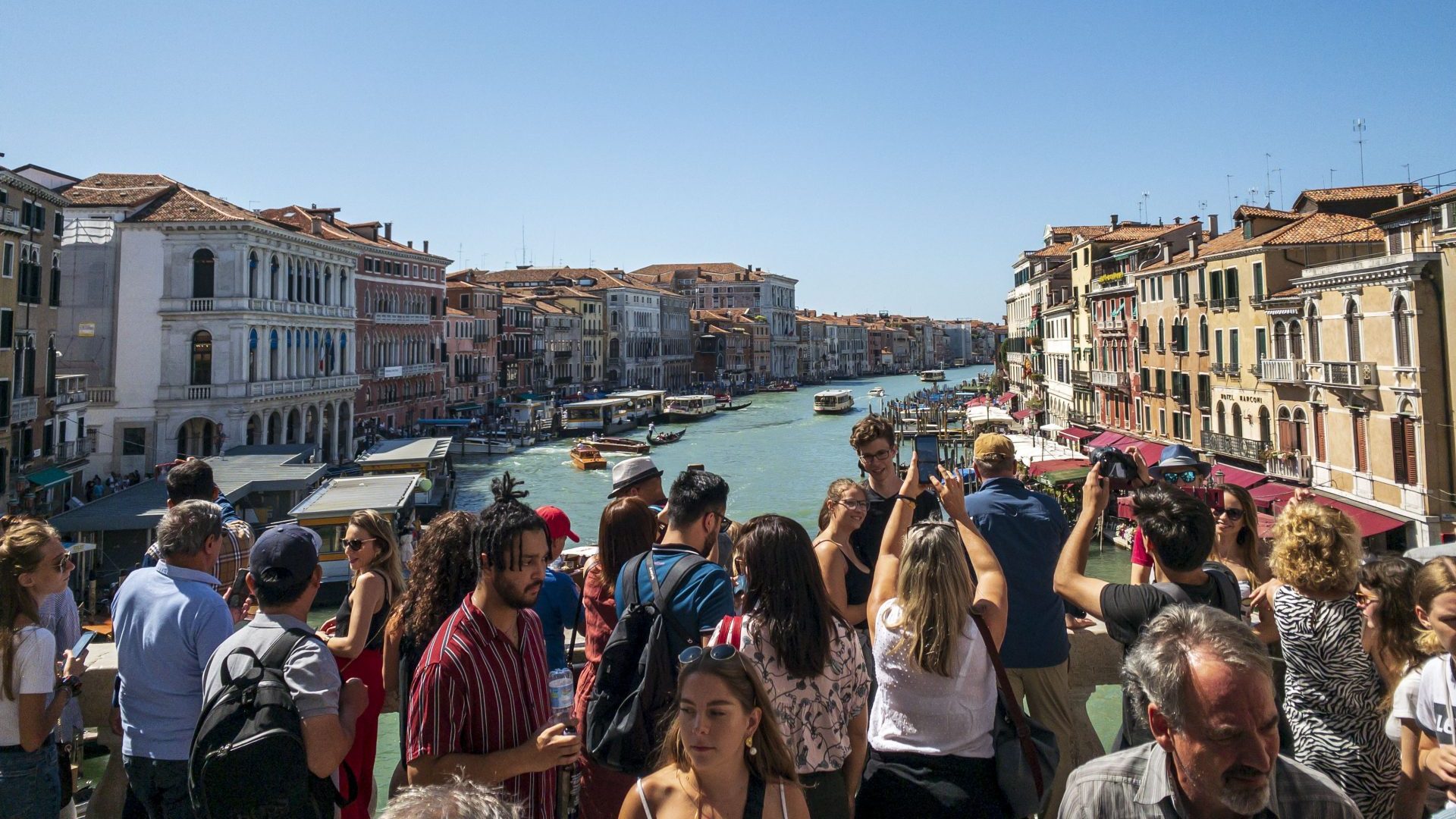After repeated delays, Venice has confirmed that a tourist charge for visitors will be introduced next spring. The charge of €5 a day will be applied on a trial basis, and is expected to focus on the busiest days of the year, including summer weekends and public holidays.
The charge was first proposed in 2019, when the number of people who visited Venice that year reached 5.5 million, but was shelved following the pandemic, when visitor numbers dropped to 1.3 million. Numbers have been on the rise again since, and are on course to hit record levels this year.
In a statement, Simone Venturini, the councillor in charge of tourism, said that the city authorities understood the urgency of “finding a new balance between the rights of those who live, study or work in Venice and those who visit the city. She also stressed the importance of sometimes “putting a brake on day-to-day tourism”.
Mattia Agnetti, who oversees a body that runs museums in Venice, says of the charge: “I’d rather call it a contribution to the maintenance of the city, which is quite challenging, actually. Our buildings were not intended to be museums – the palazzi were private houses – and therefore adapting and maintaining these buildings is quite difficult.”
The burden of maintaining the city, its buildings and canals has been exacerbated by dwindling financial support from central government, and is unlikely to be addressed by the charge, which is expected to cover its own operating costs. Instead, Agnetti hopes the charge will encourage tourists to avoid the busiest days.
The threat to Venice from climate change, overtourism, and a falling population has been understood for at least the last decade, but in The Art Newspaper last month, Anna Somers Cocks, a former chair of the Venice in Peril Fund, said that the city’s authorities had only now accepted the threat from rising sea levels.
Previously, she writes, dozens of conferences have been held to discuss the dangers faced by the city, “totally ignoring the fact that Venice will have no tomorrow unless steps are taken to prevent its inescapable attrition by the rising water level”.
The daytrippers’ charge may be back on the agenda in response to criticism from Unesco, which has once again raised the prospect of adding Venice to its list of endangered heritage sites. It has dismissed as inadequate the new experimental flood barriers, and a tourist tax levied on overnight visitors. The tax, which is similar to schemes in other cities including Barcelona, has been in force since 2011, with a sliding scale charge of between €1-€5 per person per night.
In 2021, the largest cruise ships, which present perhaps the most aggressive threat to the city’s architectural and ecological integrity, were finally banned from Venetian waters after years of campaigning by pressure groups including Greenpeace. But monster vessels are still permitted to dock elsewhere within the lagoon.
Unesco’s World Heritage Committee has been worried about the city for a while now, but it has repeatedly shied away from listing the city and its lagoon as in danger, having first raised the possibility in 2014. Time and again, the committee has caved in to pressure from Italy, which Anna Somers Cocks likens to “an alcoholic in denial”. The commercial interests at stake may also have been a factor.
Meanwhile, the city’s population is in terminal decline, pushed out by rising prices and a lack of housing – much of the accommodation has been taken over as short-term lets for tourists. Even the supermarkets mostly cater for the visitors. Full details of the tourist charge and exemptions are being released soon, but it seems clear that a much bigger response than this is needed if Venice is to avert catastrophe.




